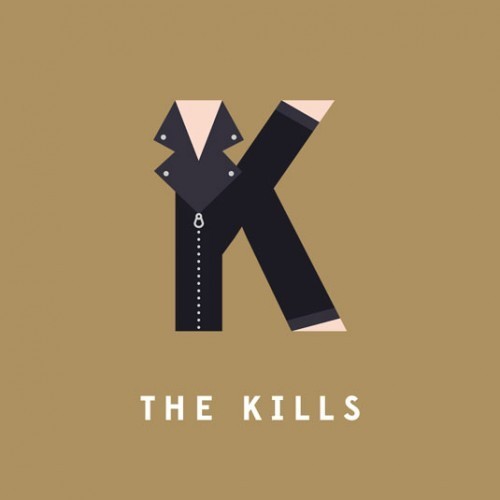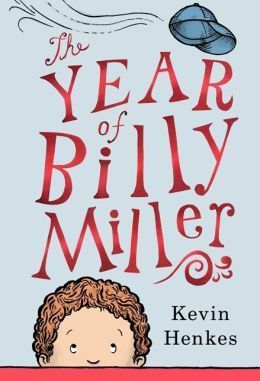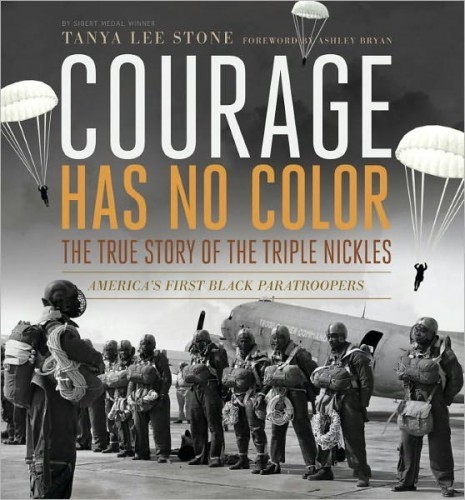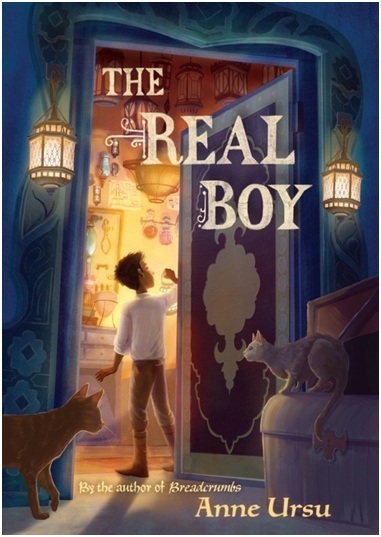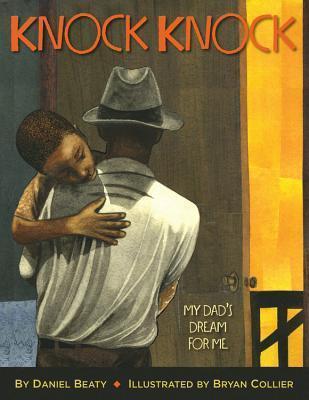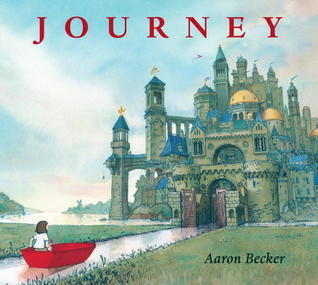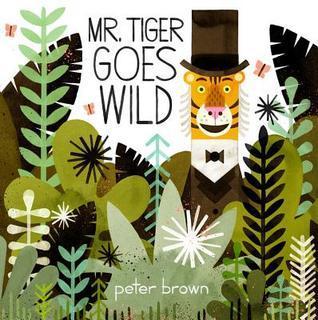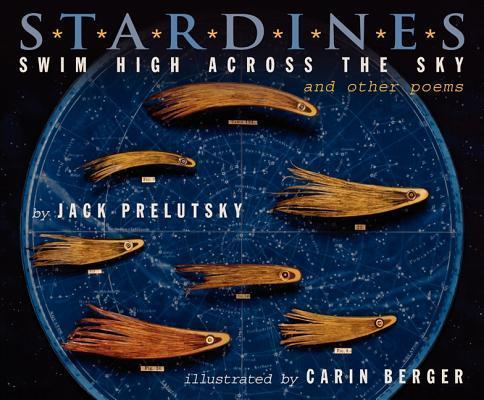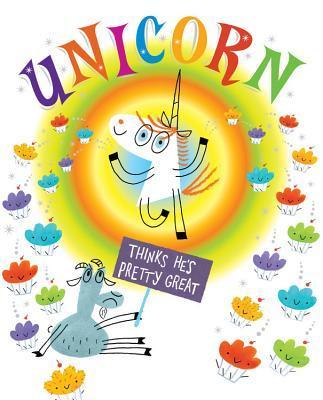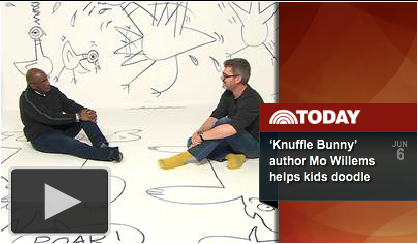Betsy Bird's Blog, page 310
June 25, 2013
A Summer Reading Theory: A Cockeyed Query for the Edu-ma-cation Types
Yesterday I spent the bulk of my working day engaged in an activity that I suspect many of my fellow librarians deal with each and every summer. As the summer reading lists start walking into my branches I’ve been encouraging my librarians and information specialists to copy these little beauties and send me copies of what they list. And I am happy to report that my librarians have been particularly good at forwarding on the requests this year. Many is the librarian who will understand why this can be essential. Schools vary widely in New York City, and whether you’re a charter school, a private school, or a public school, you’re going to have books that need to be read over the summer months so as to avoid the dreaded summer slide.
Now some teachers do a stand up and cheer job selecting just the right books for their students to read. They’ll comb through the reviews and awards and produce a mix of titles both old and new for the kids to pick and choose. Other teachers strictly adhere to the same old classics, and that’s okay too. Then there are the teachers that get excited about a few titles but fail to check and see whether or not the public library system owns any copies of those books at all.
Hence my job. I seek. I find. I add.
I also stumble across a lot of out-of-print titles that seem very odd. These are good books and the demand for them is high. Why are they out-of-print? Here are two recent and particularly baffling titles that would fall into this category:
I Hate English by Ellen Levine, illustrated by Steve Björkman – Great book. I believe it was PW that said of it, “Differentiating carefully between the Asian and Caucasian characters, the breezy humor of the pictures alleviates what otherwise would have been a burdensome bibliotherapeutic message.”
Bears on Wheels by Stan & Jan Berenstain – Yeah, an easy Berenstain Bears book is out of print. Say what now?
But the phenomena that I would like to address is something I’ve recently deemed The Five Year Rule. This rule only applies to certain reading lists. Whether or not it is found in other parts of the country I cannot say. All that I know is that I came across this occurrence last year and 2013 has confirmed my suspicions.
Last year I was collecting my summer reading lists as per usual when I came across something strange. The books appearing on a lot of lists had something in common. They were good books but often titles that had been weeded from my system for lack of use. Now suddenly they were all the rage, five years after publication. Thus the Five Year Rule. In New York City, it often takes five years for a book to start consistently showing up on summer reading lists. This year my theory was backed up by the appearance of books like Brooklyn Bridge by Karen Hesse on the lists. Originally published in 2008, some folks can’t get enough of it right now.
So my question to you today, folks, is whether or not this is a pure NYC phenomenon or if summer reading lists nationwide do something similar.
What say you?
June 24, 2013
Review of the Day: Niño Wrestles the World by Yuyi Morales
 Nino Wrestles the World
Nino Wrestles the World
By Yuyi Morales
Neal Porter Books – Roaring Brook Press (an imprint of Macmillan)
$16.99
ISBN: 978-1-59643-604-6
Ages 3-7
On shelves now
If there is any topic on the lips and minds of librarians, teachers, and other gatekeepers it is the state of multicultural literature for kids today. Seems a week can’t go by without a new study or proposal to deal with the need for more books about kids of color being published today. Recently I discovered that while books for kids containing Latino characters are rare in and of themselves, imported children’s books from Mexico are downright impossible to find. Most of the Spanish language books for kids you’ll find are translations of American books or imports from Spain. It’s what makes an author/artist like Yuyi Morales such a godsend. Not only are her books hilarious, cheeky, and beautiful all at once, but she brings a perspective that we simply do NOT see. Sure this book was originally published in America, but it has a take we can’t get anywhere else. I’ve loved her books for years but Yuyi’s latest, Niño Wrestles the World? My favorite. Nuff said.
Ladies and gentlemen, Senoras Y Senores, behold Niño, the greatest wrestler of our age. Sure, he may just look like a boy who put on a mask and stripped down to his underwear, but don’t count him out. The biggest baddest contenders fall in his wake. Behold his defeat of the Guanajuato mummy or the terrifying La Llorona. Thrill to the fight between Nino and the Olmec Head or the mysterious Chamuco. Each and every one proves they are no match for Niño’s talents. That is, until his little baby sisters wake up and it becomes clear who really is the champion wrestler in this family.
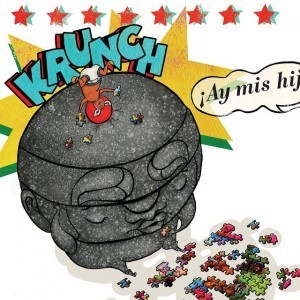 Now what I’m about to tell you is 100% true. For years I worked as a children’s librarian in New York Public Library’s main branch. Often we’d have class visits from kids all around the city (and from other countries as well). And more than once I was asked for books on the topic of Mexican wrestlers. I kid you not. Fun Fact: No nonfiction or fictional book (aside from the Lucha Libre series by Xavier Garza) exists for children on this topic. Zippo. Zero. Zilch. The oddest result of all of this is that over the years, as publishers ask where the gaps are in children’s collections, the first thing that would pop into my brain over and over was “Mexican wrestlers”. I don’t think they bought it. In fact, Niño Wrestles the World is the very first book of its kind to touch on this topic in ANY aspect since I went on my recommendation spree. You want another book like this one? Good luck to you. Morales knew she had a good thing when she wrote this one up.
Now what I’m about to tell you is 100% true. For years I worked as a children’s librarian in New York Public Library’s main branch. Often we’d have class visits from kids all around the city (and from other countries as well). And more than once I was asked for books on the topic of Mexican wrestlers. I kid you not. Fun Fact: No nonfiction or fictional book (aside from the Lucha Libre series by Xavier Garza) exists for children on this topic. Zippo. Zero. Zilch. The oddest result of all of this is that over the years, as publishers ask where the gaps are in children’s collections, the first thing that would pop into my brain over and over was “Mexican wrestlers”. I don’t think they bought it. In fact, Niño Wrestles the World is the very first book of its kind to touch on this topic in ANY aspect since I went on my recommendation spree. You want another book like this one? Good luck to you. Morales knew she had a good thing when she wrote this one up.
One of the current buzzwords ah-buzzing in my ear is the term “imaginative play”. Have you run across this one? The long and the short of it is that the story is about a kid using their imagination in some fashion. Calvin and Hobbes, say, would be the quintessential imaginative play comic strip. Because I have parents that look for these types of books I keep a running roster of titles going in my brain (Hot, Hot Roti for Dada-ji, Mighty Max, etc.). Add to the pile Niño himself. I love that the villains he wrestles aren’t your standard famous Mexican wrestler names, but rather the supernatural creatures and critters that your average Mexican kid would be familiar with. There is a fine tradition of Mexican wrestlers wearing masks that represent these very characters, and there have even been B movies (like Santo Vs. The Mummies of Guanajuato) that precede Niño’s fantasies. Mummies and aliens and the devil himself all make for perfect easily defeated and outwitted foes. Little sisters are another matter entirely.
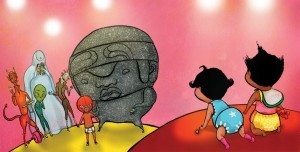 As I have no typography or design background I don’t know how much I can say about this book without coming off as a doofus. I will say, however, that there were a lot of stylistic choices at work that I approved of. Take the sound effects as an example. They’re not the ones you’d find on your average episode of Batman. Rather than your standard “Bam”s and “Pow”s we have “BLOOP”, “SLISH”, “ZOK”, and “PACHATAS” amongst others. Then there’s the Spanish itself. Incorporated seamlessly into the English text, Morales has opted not to include a Glossary of terms at the end of the book. It’s all about context, something that might bug me in another book but here struck me as appropriate considering the subject matter. That said, I was inordinately grateful for the pronunciation guides. As one of those kids who took French in high school because of her love for the rock opera The Phantom of the Opera, my familiarity with the Spanish language is fairly limited. Fortunately, most of the characters’ names are intuitive and those that aren’t (I’m looking at you La Llorona) are defined crisply and coherently in the endpapers.
As I have no typography or design background I don’t know how much I can say about this book without coming off as a doofus. I will say, however, that there were a lot of stylistic choices at work that I approved of. Take the sound effects as an example. They’re not the ones you’d find on your average episode of Batman. Rather than your standard “Bam”s and “Pow”s we have “BLOOP”, “SLISH”, “ZOK”, and “PACHATAS” amongst others. Then there’s the Spanish itself. Incorporated seamlessly into the English text, Morales has opted not to include a Glossary of terms at the end of the book. It’s all about context, something that might bug me in another book but here struck me as appropriate considering the subject matter. That said, I was inordinately grateful for the pronunciation guides. As one of those kids who took French in high school because of her love for the rock opera The Phantom of the Opera, my familiarity with the Spanish language is fairly limited. Fortunately, most of the characters’ names are intuitive and those that aren’t (I’m looking at you La Llorona) are defined crisply and coherently in the endpapers.
As an artist, Morales has tackled various original artistic formats over the years. She’s one of the few illustrators I know who has ever gotten away with using models (My Abuelita by Tony Johnston) while the paints (or were they pastels) of Little Night positively glowed on the pages. Niño is notable in part for replicating an advertising or poster-like style (design major everywhere, rejoice). The stencil-like faded images of the background contrast sharply with the characters, all rendered in acrylics, inks, digital effects, and even salt (?) which visually leap off the page. I like the in-jokes as well. For example, when Niño uses his puzzle to defeat Olmec Head, the image on the puzzle cover is from Just a Minute, also by Ms. Morales. There are, admittedly, a couple moments where it’s hard to figure out what’s going on. Niño’s battle against El Chamuco involves scooters, LEGOs and popsicle sticks, but beyond that I’m not entirely certain what’s taking place in the final “ZZZWAP” sequence. Fortunately it’s so much fun I hardly care.
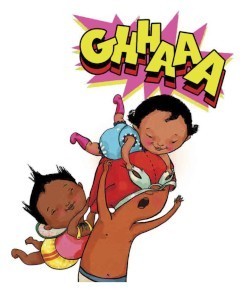 Then there’s Niño himself. I mean look at that guy. Has any kid in his tighty whities ever looked half as confident as Niño does when staring you down with that smile? The key to the story, to some extent, is the fact that when Niño defeats a villain he does so using games. Whether it’s marbles or puzzles or dolls, Niño’s weapons are the weapons of childhood itself. Little wonder he’s powerless in the presence of his baby sisters. The sisters, for their part, never change expression. They are coy. Little adorable angels/devils, there will be readers out there that more than sympathize with Niño’s plight.
Then there’s Niño himself. I mean look at that guy. Has any kid in his tighty whities ever looked half as confident as Niño does when staring you down with that smile? The key to the story, to some extent, is the fact that when Niño defeats a villain he does so using games. Whether it’s marbles or puzzles or dolls, Niño’s weapons are the weapons of childhood itself. Little wonder he’s powerless in the presence of his baby sisters. The sisters, for their part, never change expression. They are coy. Little adorable angels/devils, there will be readers out there that more than sympathize with Niño’s plight.
I took this book to Spain it was instantly embraced by my friends in Barcelona. Not only for the clever wordplay and great idea, but for the very art itself. There is something magnificently and universally appealing about Niño. Whether it’s the goofy plot, the eye-popping art, or the fact that there is NOTHING on your bookstore and libraries shelves like this right now, this one-of-a-kind little number is going to lure in boys and girls alike. You’ve never seen anything like it, but after reading it you’ll beg for more of the same.
¡Viva La Lucha Libre!
On shelves now.
Source: F&G sent from publisher for review.
Like This? Then Try:
The Mighty Lalouche by Matthew Olshan, ill. Sophie Blackall
Dinosaur Vs. Bedtime by Bob Shea
Mighty Max by Harriet Ziefert
Hot, Hot Roti for Dada-ji by Farhana Zia, ill. Ken Min
Other Blog Reviews:
Seven Impossible Things Before Breakfast @ Kirkus
Professional Reviews:
A starred review at Publishers Weekly
Kirkus,
Misc: Get the true behind-the-scenes look at the art over at Seven Impossible Things Before Breakfast.
June 22, 2013
Cover Reveal: The Quantum League by Matthew Kirby
I’m don’t run what you might call a blog that revels in cover reveals. It takes a special kind of author or illustrator to get me interested. Someone like, oh say, a Matthew Kirby.
Thus it is with great pleasure that I present to you one of his upcoming books. This September we’ll be seeing the release of his The Lost Kingdom. But September’s old news, babies. Let’s look at something even future-er (note to self: not a word). Behold! The Quantum League by Matthew Kirby.
Now THAT is a cover! Curious? Here’s a description of the plot.
“When Ben Warner discovers that he has the ability to change reality simply by imagining it differently, he is drawn into the secret and powerful world of Actuation. But a dangerous turf war is being waged between opposing gangs of actuators, and suddenly Ben finds himself in the middle of it. Will he be able to harness his powers to save his friends and himself, as he enters a perilous, hidden world full of impossibilities now made possible?
From Edgar Award-winning author Matthew J. Kirby comes a fast-paced, boldly imagined adventure story about the infinite power of imagination.”
Many thanks to Mr. Kirby for the reveal.
June 21, 2013
Fusenews: More rubbish, please!
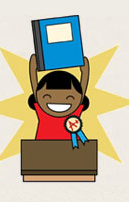 You know what’s hot these days, topic-wise? Diversity! Or maybe just the lack thereof. Seems its all anyone can talk about this week. First the First Book blog reported that “at the 2013 Clinton Global Initiative America (CGI America) meeting, hosted by President Bill Clinton, [they] announced First Book’s commitment to create a sustainable solution to this problem by dramatically expanding the market for diversity in children’s literature through The Stories for All Project.” You can see a bit more of what they mean here. Soon thereafter, Lee and Low published a post entitled Why Hasn’t the Number of Multicultural Books Increased in Eighteen Years. The piece interviews academics, authors, librarians, educators, and reviewers, including yours truly. It’s well worth reading, though J.L. Bell did point out on Twitter that booksellers would have made for a smart inclusion as well. Roger Sutton offered his own response, though I am most grateful for his “semi-impolitic” take. Amen to the rubbish. Amen.
You know what’s hot these days, topic-wise? Diversity! Or maybe just the lack thereof. Seems its all anyone can talk about this week. First the First Book blog reported that “at the 2013 Clinton Global Initiative America (CGI America) meeting, hosted by President Bill Clinton, [they] announced First Book’s commitment to create a sustainable solution to this problem by dramatically expanding the market for diversity in children’s literature through The Stories for All Project.” You can see a bit more of what they mean here. Soon thereafter, Lee and Low published a post entitled Why Hasn’t the Number of Multicultural Books Increased in Eighteen Years. The piece interviews academics, authors, librarians, educators, and reviewers, including yours truly. It’s well worth reading, though J.L. Bell did point out on Twitter that booksellers would have made for a smart inclusion as well. Roger Sutton offered his own response, though I am most grateful for his “semi-impolitic” take. Amen to the rubbish. Amen.Happiness. The Save-the-Library children’s book art auction for P.S. 363 is well underway and the number of things you can bid on has increased. Go see for yourself!
JUST ADDED:
Autographed books by Rick Riordan and Alice Walker…
A Leslie Petricelli one-of-a-kind painting from BLANKIE!…
A Jaime Zollars fine-art bug-parade print…
A cray-cray-graphic-mod pink pretzel print from Chistopher Silas Neal…
A Harry Potter limited edition collage…
A Janet Pedersen one-of-a-kind watercolor for hippo and book lovers…
A lovely original Daniel J. Mahoney watercolor from a book about the joys of storytime…
And notecards by P.S. 363 students and our wonderful art teacher Valerie Hammond!
Roundabout two years ago I had the great good fortune to go to the Bologna Children’s Book Festival when I was 7 months pregnant. The memory of my swollen ankles comes to me in my darkest hours even to this day, bu that’s neither here nor there. While in Italy I was invited to a perfectly lovely dinner with Andrew Karre and a slew of other folks including a guy by the name of Klaus Flugge. I interviewed the man for my SLJ article “Betsy Goes to Bologna” (not available online anymore, alas) and he was a true delight. Now I’m happy to hear that Letters to Klaus is due for publication. Fantastic!
This piece on Brain Pickings was simply called Maurice Sendak Illustrates Tolstoy. Pore over these drawing for a while, if you please. You’ll be happy you did. Thanks to PW Children’s Bookshelf for the link.
Confused about the Common Core? Then check out science writer Dia Michels and her There’s Nothing Standard About the New Standards: A parent’s guide to understanding what “Common Core” means for your children. It does a good job of doing away with some of the misconceptions about CCSS. Mind you, some parts could bear some clarification. The idea that “Nonfiction texts will account for a full 70% of all reading assigned in the classroom, with fiction added to provide literary merit to the reading experience” is true, but kids won’t reach the 70% level until high school. So consider this a beginner’s manual and not so much the final word.
Me stuff time. This past Sunday I got some very lovely press-related presents. The first was a lovely little review of Giant Dance Party in The New York Times. So . . . wow. I feel quite spoiled and this fantastic inclusion of this same book in Daily Candy’s Best Summer Books for Kids round-up didn’t help to humble me one bit.
Daily Image:
The best I could do this week was indulge in some abecedarian delights. Today, Jim Billy Wheeler, a designer by trade, creates an alphabet of his favorite bands.
You can see more of them here. Thanks to BB-Blog for the link!
June 20, 2013
Notes from The Nonfiction Dialogue Stickler of Doom
 If you had told me as recently as a year ago that I was doomed to become The Nonfiction Dialogue Stickler of Doom (copyright pending) I would have said . . . . well, honestly I would have asked where you came up with that term. Then, once you’d defined it (Nonfiction Dialogue Stickler of Doom = A person that is particularly perturbed by false dialogue appearing in works of children’s nonfiction), I would have laughed in your face. I am hardly a born and bred nonfiction reader. My first love is, has been, and ever will be fiction in all its myriad forms. But that was when I was young and innocent. Before the day of Core Curriculum and terms like “primary sources”. I’m older now. More gnarled about the edges. And this year, in spite of the relative plethora of works of nonfiction for the kiddos, I am running into a very big problem. Mainly: Fake dialogue.
If you had told me as recently as a year ago that I was doomed to become The Nonfiction Dialogue Stickler of Doom (copyright pending) I would have said . . . . well, honestly I would have asked where you came up with that term. Then, once you’d defined it (Nonfiction Dialogue Stickler of Doom = A person that is particularly perturbed by false dialogue appearing in works of children’s nonfiction), I would have laughed in your face. I am hardly a born and bred nonfiction reader. My first love is, has been, and ever will be fiction in all its myriad forms. But that was when I was young and innocent. Before the day of Core Curriculum and terms like “primary sources”. I’m older now. More gnarled about the edges. And this year, in spite of the relative plethora of works of nonfiction for the kiddos, I am running into a very big problem. Mainly: Fake dialogue.
But before we proceed any further, allow me to turn your attention to author Marc Tyler Nobleman. You’ll know him best for his fantastic comic book bios Boys of Steel: The Creators of Superman and Bill the Boy Wonder: The Secret Co-Creator of Batman. Well Marc recently whipped up a piece for the Horn Book Magazine entitled Danger! Dialogue Ahead that may as well have been written just for me. In the piece Marc tackles the challenges any author must face when attempting to make a work of nonfiction for kids interesting, vital, and accurate all at once.
Fabricated dialogue is hardly a new occurrence in works of nonfiction for children (paging Childhood of Famous Americans), but never before has it faced this level of scrutiny. And as Marc says in his piece “Technically, no nonfiction book is pure nonfiction. Even if every word of every quotation can be corroborated, the bugaboo is the placement of those quotations.” As a reviewer I’ll be (to my mind anyway) quite lenient just so long as the author makes at least a passing attempt to justify why they said a character said one thing or thought another. Too often that leniency gets pushed too far.
In 2013 there have been at least (and this is conservative) five major children’s nonfiction titles, some of which have received starred reviews, that contain dialogue that is improbable at best and downright liar-liar-pants-on-fire wrong at worst. Books that fail to make even the vaguest effort to explain why something is fact rather than fiction. With the rise of interest in STEM and the Core Curriculum, we’re going to have to keep an eagle eye out for titles that bend the rules so far that they break. Believe me when I say that I am sympathetic to these authors. Some of their subjects have the potential to make for dull as dishwater books, and you can understand the instinct to liven things up a bit. Just . . . be careful when you do. There are worse things in the world than playing it safe.
June 19, 2013
Review of the Day: Jane, the Fox & Me by Fanny Britt
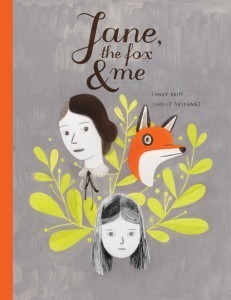 Jane the Fox and Me
Jane the Fox and Me
By Fanny Britt
Illustrated by Isabelle Arsenault
Translated by Christelle Morelli and Susan Ouriou
Groundwood Books
ISBN: 978-1-55498-360-5
$19.95
Ages 9-12
On shelves September 1st
Isn’t it strange how few children’s graphic novels are published in a given year? This is one of those phenomena that defy the basic tenants of capitalism. The need, as anyone who has ever fielded reference questions from 10-year-olds will attest, is vast. Yet the product sputters out of publishing houses so sparsely and randomly that you can’t help but be baffled. The only justification I can come up with is that graphic novels are bloody expensive to produce. That would certainly account for how many settle for single colors or black and white. Then there’s the fact that they take forever to create. Even if a kid adores the first book in a series, if the art is really well done it could easily take an artist seven years to produce a sequel. Seven years is a long time if you’re ten. Taking all of this into account, I am understandably wary when a new GN hits bookstore and library shelves and I feel my pulse pick up. Am I excited about this book because it is good or because it’s a rarity? With Jane, the Fox & Me by Fanny Britt the answer is clear. I am excited about this book because this book is exciting. In the awe-inspiring sense, of course.
So many kids in school wish they weren’t considered invisible. For Helene, the opposite is true. Everywhere she goes she runs into cruel comments about her weight or that she smells or equally childish accusations. Most of these are from the girls she used to hang out with, before they decided to suddenly make her into a pariah. Her only escape is a copy of Jane Eyre which she dives into at every available moment. When her class wins a special “treat” of going to a nature camp for four nights nothing could be more unwelcome. At the camp Helene finds herself in the outcast cabin, and even the sight of a wild fox can’t break her out of her depression. It isn’t until she meets Geraldine and finds herself in the thick of a new, true friendship that things start to subtly take a turn for the better.
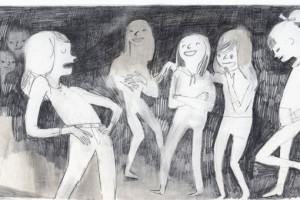 Originally published in Quebec as Jane, le Renard & Moi, reading the book is a clear trip into another culture. For the United States-born child reader, some of the elements in the story may strike them as unusual. The fact that the student Lucia Munix “can’t speak French yet because she just moved to Montreal” will be a tip-off, or else the names of the characters (Geraldine, Gerard, Marthe, Genevieve, etc.). My suspicion, however, is that the bulk of U.S. readers aren’t even going to notice. At its heart, this is a universal story. You relate to the bullying, the ability to identify with a fictional character (even as we identify with Helene), and the school setting. I certainly identified with those moments when Helene will pretend to tie her shoe or do something similarly minor to look busy. They’re small moments, but remarkably real.
Originally published in Quebec as Jane, le Renard & Moi, reading the book is a clear trip into another culture. For the United States-born child reader, some of the elements in the story may strike them as unusual. The fact that the student Lucia Munix “can’t speak French yet because she just moved to Montreal” will be a tip-off, or else the names of the characters (Geraldine, Gerard, Marthe, Genevieve, etc.). My suspicion, however, is that the bulk of U.S. readers aren’t even going to notice. At its heart, this is a universal story. You relate to the bullying, the ability to identify with a fictional character (even as we identify with Helene), and the school setting. I certainly identified with those moments when Helene will pretend to tie her shoe or do something similarly minor to look busy. They’re small moments, but remarkably real.
With its original French roots I have to give translators Christelle Morelli and Susan Ouriou full credit for a remarkable job. Not enough people in this world understand how crucial the writing is in any given graphic novel. It’s what separates the wheat from the chaff. And because this is a quiet school story, so much of the book depends on Helene’s singular voice and observations. There’s a section near the beginning of the book when Helene recounts a day when she woke up to find that her mother had sewed a crinoline dress for her in the night. Looking at it she can’t help but list everything her mother does for the family, from the laundry to meals to the sewing. She imagines her mother so exhausted at the end of the day, yet still working on this dress, that she says, “to herself out loud so just maybe someone will hear her, even though by now everyone’s in bed, ‘I’m so tired I could die’.” Thinking of all this she continues to stare in the mirror. Her obsession with crinolines had, at this point, long since passed ever since her fellow-crinoline lovers turned into her adversaries at school. “So I stare at the beautiful brand-new crinoline dress that’s mine alone with no whiff of mothballs.” A pause. “Even so, it droops a little.” Kills me, that line.
 The relationships in the book gel well, particularly the comfortable moments between Helene and her mom. There’s a point at which they’ve just survived a shopping excursion with a perky saleswoman from hell and now they’re having an ice cream and a coffee. A companionable moment happens as they sit on a bench. It feels desperately real. As for her relationships with her schoolmates I was almost always on board. There is, by the story’s end, a subtle change between Helene and her tormentor Genevieve that strikes a hopeful if false note. I do have a bit of a hard time believing that Helene would so readily forgive Genevieve by the story’s end. Particularly since it’s clear that this change in their relationship has happened out of the blue and for no particular reason. We go from a hellish daily experience to an out-of-the-blue peace. I would have liked a little more reason for that.
The relationships in the book gel well, particularly the comfortable moments between Helene and her mom. There’s a point at which they’ve just survived a shopping excursion with a perky saleswoman from hell and now they’re having an ice cream and a coffee. A companionable moment happens as they sit on a bench. It feels desperately real. As for her relationships with her schoolmates I was almost always on board. There is, by the story’s end, a subtle change between Helene and her tormentor Genevieve that strikes a hopeful if false note. I do have a bit of a hard time believing that Helene would so readily forgive Genevieve by the story’s end. Particularly since it’s clear that this change in their relationship has happened out of the blue and for no particular reason. We go from a hellish daily experience to an out-of-the-blue peace. I would have liked a little more reason for that.
I have mentioned that full-color graphic novels are an expensive affair, but by the same token there’s an understanding in the industry that children will read black and white comics only rarely. How to find the balance between these two seemingly opposite notions? A judicious use of color. In this book Helene disappears into Jane Eyre to escape the taunts of her schoolmates, and as she does so Jane’s story suffuses the pages with color. At first it’s just red of varying hues, but soon after it gives Helene a little green Eden of her own making. That Eden’s color comes and goes throughout the story. The only colored moments remain in Helene’s head until the moment she sees a fox in the woods. After that, she makes a friend and then when she returns to school, there’s a change. Small, but evident. Red shoes. A blue wall. Green and blue jungle leaves in the midst of suburban greenery. It’s not a full-color world yet, but things are getting a little bit better.
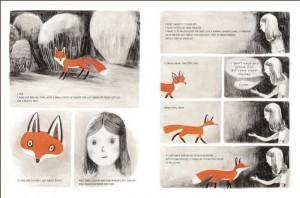 At the risk of dipping a bit too deeply into the book, can we talk fonts? I’m not a font person. I don’t know my Helvetica from my Geneva and I’ve only the vaguest sense as to why Comic Sans is as universally disliked as it is. However, when it comes to comics I suddenly become a font connoisseur. I watch for the subtle variations between the blocky all-caps font of Helene’s narration, the very different font of the Jane Eyre sections, and the cursive of dialogue. In particular, I love how names will sometimes appear in the handwriting of that person. It’s a great way to highlight the importance of a name at a given moment.
At the risk of dipping a bit too deeply into the book, can we talk fonts? I’m not a font person. I don’t know my Helvetica from my Geneva and I’ve only the vaguest sense as to why Comic Sans is as universally disliked as it is. However, when it comes to comics I suddenly become a font connoisseur. I watch for the subtle variations between the blocky all-caps font of Helene’s narration, the very different font of the Jane Eyre sections, and the cursive of dialogue. In particular, I love how names will sometimes appear in the handwriting of that person. It’s a great way to highlight the importance of a name at a given moment.
A friend of mine once told me the story of something that happened to her when she was in the second grade. All at once one day all her friends decided that she was poison. For seemingly no reason they wrote her a letter explicitly stating that she was no longer their friend and they hated her. I remembered this story as I read the tale of Helene and the very similar shut out she experienced at the hands of her former friends. Sometimes there is no logical explanation for child cruelty. We’re lucky if we have a Jane Eyre to turn to, even as we try to find new friends and confidants. For some children out there, Jane, the Fox & Me is going to be their own Jane Eyre. Helene will shoulder their blows and offer hope for coming out strong at the end. Could a book of this sort hope for anything better? A rare piece.
On shelves September 1st.
Source: Final copy sent from publisher for review.
Like This? Then Try:
Chiggers by Hope Larsen
The Storm in the Barn by Matt Phelan
The Second Life of Abigail Walker by Frances O’Roark Dowell
Misc:
Read an article on the two women behind the book (always assuming you can speak French, of course) in La Presse.
Videos:
Also in French, Ms. Pénélope Bagieu talks up the book for you.
June 17, 2013
Newbery/Caldecott 2014: The Summer Prediction Edition
And then it was summer. When you put out a spring prediction list you can rest safe and sure in the knowledge that there’s an entire second half of the year you haven’t seen. Now we’re in the thick of summer and while I’ve seen a good-sized chunk of the coming year, there are certainly a fair number of books still waiting to be read. Heck, we haven’t even had our big ALA Conference yet. With all that in mind, Travis at 100 Scope Notes recently summed up what the Goodreads folks are predicting. Not one to go quiet on the subject, here’s what I’m thinking about in terms of some of the contenders:
NEWBERY THOUGHTS
Doll Bones by Holly Black – How convenient that Ms. Black appears first alphabetically on this list, since her book is the frontrunner as far as I’m concerned. The more I think about it, the more I like it. At this year’s SLJ Day of Dialog (a day before BEA when SLJ and a host of publishers present their wares for the librarian public, punctuated by great panel discussions) we discovered that not only is Ms. Black a preeminent writer, but she can give a helluva good speech when half-inclined to do so. And while the ability to write a Newbery acceptance speech is not something a committee can consider when choosing a winning book, it certainly can’t hurt in the long run!
The Water Castle by Megan Frazer Blakemore – I’ve always liked it but it wasn’t until I started touring bookstores, promoting my own picture book, that I realized that it wasn’t just me that was loving it. Independent bookstores, big Barnes & Nobles, libraries across this great nation, EVERYONE is gaga for Blakemore’s latest. Maybe my comparing it to Tuck Everlasting wasn’t so crazy after all . . .
Africa Is My Home: A Child of the Amistad by Monica Edinger – I’m sure you could make a very strong case for the fact that Monica is a friend and my including this book at all on this list is an indication of clear bias. I would like to point out, though, that I am friends with many many people who are authors. Folks who have books out this year and those books are NOT on this list. The fact that this book is should be a clear tip-off that there’s something special about it. And with Robert Byrd’s illustrations, it’s hard not to think of it as the second coming of Good Masters! Sweet Ladies!
The Year of Billy Miller by Kevin Henkes – Henkes may well be one of the nicest men working in the children’s book business today (and that’s saying something) but while I respected his previous Newbery Honor win Olive’s Ocean it didn’t get me here *thumps chest*. This book is different. Written in what I consider to be the second hardest children’s book genre there is (#1 = easy books, #2 = early chapter books) Henkes somehow manages to write something touching and real all at once while at the same time making a boy that feels remarkably “boy”. There’s just something about Billy. I can’t think of another kid quite like him. Wouldn’t be surprised at all if this took home the gold.
Hokey Pokey by Jerry Spinelli – Tried and true, Spinelli. The talk continues to circle about this one. The cries of “is it kid-friendly enough” erupt from time to time as well. For a fun time, compare and contrast this one at length with Doll Bones. They have more similarities than differences, after all.
Courage Has No Color, the True Story of the Triple Nickles: America’s First Black Paratroopers by Tonya Lee Stone – By this point in the proceedings I should have seen at least one other Newbery-worthy bit of nonfiction for 2013. Unfortunately, so far nothing doing. Stone’s book is still spectacular and very well done, but whether or not this is a nonfiction loving committee remains to be seen. As far as I can tell, if anything won their love, it would be this.
The Center of Everything by Linda Urban – Initially I couldn’t find any backlash to this one. Now it’s started up and it’s pretty much what you’d expect. Some folks are calling it boring or something they couldn’t get into. We’re allowed to write slower book for kids, though, and I’ve said it before and I’ll say it again: Urban gets better with every book. Take that as you may.
The Real Boy by Anne Ursu – I believe it was Colby Sharp who commented on the Travis post, “I’m going all in *pushes giant stack of poker chips to the center of the Newbery table* with The Center of Everything (Urban) and The Real Boy (Ursu). The year of the ‘U’!” Some folks are saying it’s stronger than her previous fantasy novel Breadcrumbs. Personally I liked it just fine but my love of Breadcrumbs was sort of overwhelming so it’s hard for me to find anything to compare. I only recently finished this one so I’ll need some time to chew on it.
CALDECOTT THOUGHTS
Because there are so many more picture books published in a given year than works for older readers, Caldecott predictions have always been a bit more of a crapshoot than their Newbery compatriots. With that in mind, I still managed to cull it down to a couple folks that I think are doing truly extraordinary work this year. We’ll see what comes of it all in any case.
Building Our House by Jonathan Bean – Actually I had read this one prior to my previous prediction list. I hadn’t mentioned it, possibly because it was too obvious. It took its appearance on the recent Horn Book – Boston Globe Book Awards to snap me out of this funk. Jonathan Bean is one of those illustrators that seems as though where they walk the Ghost of Caldecotts Yet to Come float in their wake. The fact he hasn’t won one yet appears to be more a trick of fate than his own fault. Give it time. He’s due.
Knock Knock: My Dad’s Dream for Me by Daniel Beaty, ill. Bryan Collier – Like many picture book artists, Collier’s talent waxes and wanes with each subsequent book. That said, I haven’t seen him work with present day reality this well since his remarkably Uptown all those years ago (stop me now or I might start wailing about its current out-of-print status). This is a Little Brown & Co. ringer and should be treated as such. It discusses subject matter we’ve rarely seen touched on (how to cope with a caring father who one day disappears from your day-to-day life) and Collier matches Beaty’s pitch perfect text blow for blow with his own art. One to watch.
Journey by Aaron Becker – Candlewick is keeping this one close to their chest, no doubt. We couldn’t find F&Gs at BEA and there was no explicit promise we’d see any at ALA either. That said, I managed to convince an all-to-kind bookstore employee into showing me her copy and it really is quite stellar. You would never in a million years guess that this was Becker’s first picture book. Imagine what you would find if David Macaulay and Crockett Johnson ever had a lovechild. That’s Journey for you. I’m almost convinced that I’m making sense.
Mr. Tiger Goes Wild by Peter Brown – See: Journey in terms of how likely it is that you’ll get a copy of this at ALA. Knock Knock may be Little, Brown & Co.’s ringer, but Peter Brown is rapidly becoming their ace in the hole. Brown’s moved from novelty to powerhouse in the course of a few scant years. When folks were crying out for The Curious Garden to get an award it seemed charmingly optimistic. His recent Honor for Creepy Carrots changed all that, making him one to watch. And if he was ever going to be watched closely, it would be for this truly original and gorgeous little book. It may also contain the only naked centerfold in the history of picture books. Granted, it’s of a tiger.
The Matchbox Diary by Paul Fleischman, ill. Bagram Ibatoulline – It’s not that Ibatoulline isn’t always gorgeous. He is. Even when he’s illustrating books that make me a bit queasy, he does a stellar job. But doing a stellar job is only so good as the material at hand when you’re a picture book artist. Until now, I almost feel like Ibatoulline was just waiting around to meet his match. That match (pun probably unconsciously intended) has now been met in the form of Newbery Medal winner Paul Fleischman. I’m as tired of European immigration stories as the rest of us, but this book really does have something special going on. It’s a little longer than your regular picture book fare, which probably means it has as much of a shot at a Newbery as it does a Caldecott. Hmmm…. stranger things have happened . . .
Locomotive by Brian Floca – And speaking of picture books that are a little longer than usual, meet Floca. A man who believes in making a good book, and the devil take the page count! I’ve been waiting for this book since Moonshot was unfairly denied its Caldecott Award (the fact it got next to nothing burns to this day). Now we have a definitive look at railroad history and Floca’s on fire from page one onward. Deserves many close, intense looks before the year is out.
The Boy Who Loved Math: The Improbable Life of Paul Erdos by Deborah Heiligman, illustrated by LeUyen Pham – I’ve said it before and I’ve said it again: LeUyen Pham deserves a Caldecott. She just does. And while her art is always fun, this book truly shows her sheer range. From the accuracy of the clothing to the pitch perfect incorporation of math into the images, there’s a level of sophistication to this book you don’t normally find in picture book fare. Because it’s fun it might be easy to discount on a first glance. Don’t. Pham has something going on here and it’s hot as all get out.
Stardines Swim High Across the Sky by Jack Prelutsky, illustrated by Carin Berger – For once, I’d love something three-dimensional to win this award. Is that such a crazy thought? Year after year the Caldecotts go to the two-dimensional fare. Paints, inks, you name it. So imagine if shadow boxes captured the committee’s attention the way this book did mine. The result might be some credit for Berger who really knows how to make the inherently ridiculous poignant and beautiful.
Unicorn Thinks He’s Pretty Great by Bob Shea – Okay. I’ve had time to think about this. My justification (above and beyond the fact that I just happen to really like this book) is that Shea is actually doing some pretty sophisticated work here. Apart from the millions of tiny details and the amazing incorporation of text with image there’s also the simple fact that the narration does a believable turnabout, culminating in a change in artistic style. Still with me? No? Well, I’ll be a lonely island decrying its chances then. Someone should.
And yes, we’ve left out your Navigating Earlys and the like, but anything not seen here was probably considered at length. Unless it’s something I haven’t read yet (glances at the Kathi Appelt book on her shelf guiltily). That’s why I do four of these prediction sessions. Gets the blood flowing.
So what do you like?
June 16, 2013
Video Sunday: “… drawing and doodling is a form of physicalized empathy” – Mo Willems
Oh, like I was going to start off with anything else this week. Dahl was robbed!
During BEA, one of the women of the hour was our own Monica Edinger (who blogged about the experience here). Her upcoming book Africa Is My Home: A Child of the Amistad is so remarkable that it is physically difficult not to constantly keep talking about it on this site. In lieu of that, here’s a great trailer for the title to give just the tiniest taste. Brilliant, beautiful stuff.
Augh! Book carwash!!
Thanks to 100 Scope Notes for the link.
Mr. Schu was nice enough to link to a great interview between Al Roker and Mo Willems the other day. I like the inclusion of the Carle Museum and Mo’s dinner room. Weird that they don’t mention the Carle’s exhibit on Mo, though. Seems a pity. I think the part that no one’s properly discussing here is the fact that Al Roker is a darned good doodler in his own right. But what’s up with that hot to trot lady penguin? Dude.
Now THIS is impressive. A fan made book trailer created long before the publication of the book in question. When I tell you that Jon Scieszka and Mac Barnett’s Battle Bunny is a game changer, I am not joking. Just check out this video from Pink Me if you don’t believe me.
Thanks to Monica Edinger for the link.
Escape from Mr. Lemoncello’s Library by Chris Grabenstein is one heckuva fun book. I’ve read it. I’ve enjoyed it. I even liked the accompanying video. Check it:
Don’t know how I missed this one the first time. It appears to be a 90-Second Newbery love letter in the form of a song.
As for our final off-topic video, I guess I’m going to play it safe and say it’s not workplace appropriate, though honestly unless you’ve a dislike of goo or raw hearts, there’s nothing bad about it. Probably wouldn’t show it to kids, though. There’s something about teddy bears . . . . they might take it too personally.
Thanks to Marci Morimoto for the link.
June 14, 2013
Fusenews: “At 13 Bad Literature . . .”
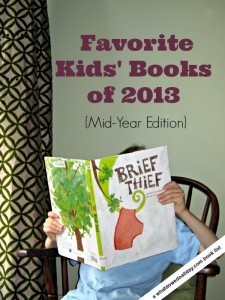 Things are wet in NYC these days. We’ve been experiencing a great deal of rainfall this past spring, a fact that gives me a strange sense of comfort. I can’t help but think this might be my first year here in town where all the fountains are on in all the parks this summer. I dream big!!
Things are wet in NYC these days. We’ve been experiencing a great deal of rainfall this past spring, a fact that gives me a strange sense of comfort. I can’t help but think this might be my first year here in town where all the fountains are on in all the parks this summer. I dream big!!
Speaking of big dreams (or, if we’re going to be honest, speaking of me stuff) I am pleased to announce that I have joined with the greats. Yes, at long last, I have an interview about Giant Dance Party with author Cynthia Leitich Smith. I’ve hit the big time, babies!! For those of you new to Ms. Smith, her interviews are legendary in the field. I’m just pleased as punch to take part. And in other happy news, Giant Dance Party ended up on the What Do We Do All Day list of Best Kids’ Books of 2013 (Mid-Year Edition). Very flattering, that. Finally, if you feel like overdosing on me (and isn’t that really how you’d prefer to spend your Friday?) you can read this enormously flattering write-up of a recent visit I made to Chicago’s Magic Tree Bookstore. Thank you, Eti!
The only thing better than the fact that they are making a Choose Your Own Adventure movie (of course they are) is the Onion A.V. Club piece on that very topic. Clearly it was written by someone who read many many of these books when they were a kid. Your required reading of the day, then.
“Loveable but unlucky in love, Amelia Bedelia is a Brooklyn barista who gets fired after a series of unfortunate misunderstandings. Unwilling to move back in with her parents, she takes a job as a live-in maid for a wealthy Park Slope family. Despite her repeated mishaps, she slowly wins everyone over. But the question remains: will she ever find true love?”
That little nugget comes from the incomparable Minh Le and his fantastic Bookriot piece Zooey Deschanel as Amelia Bedelia: A (Hypothetical) Match Made in Quirk Heaven. Also, utterly fabulous from start to finish.
In other news, Monica has the scoop on the latest Charlie and the Chocolate Factory musical, including a list of requirement for the cast and photos. Here’s one to whet your whistle:
Oh. And with all due respect to Kinky Boots, Matilda was robbed of a Tony this year. I mean, watch that Tony Award special. Watch the Matilda number. Now watch the Kinky Boots number. Need I say more? *grumble grumble grump*
At BEA this year I took part in a little something called Author Speed Dating. Basically the premise is this: As an author you are taken to a room of 19 tables. You start at the first and have three minutes per table to talk up your book to the best of your abilities to the librarians and booksellers seated there. Nineteen tables times three minutes each equals one pooped author. At this last Speed Dating event Elizabeth Bluemle was seated at one of the tables. She has since written the very useful Author Speed Dating Do’s and Don’t's. I think I can add to one of the Do’s: Get enough sleep the night before.
NPR’s Backseat Bookclub has produced an official list of all the books covered thus far. You can even convert it into a handy-dandy printout, if you feel so inclined. Swell.
Every library and museum in America mapped. Go on. See if your favorite is actually on there. My mind is still reeling from the concept itself. Thanks to bookshelves of doom for the link.
There’s a nice little New Yorker piece on a photographer who, over the years, has been systematically been visiting all the libraries in the NYPL, Brooklyn, and Queens systems (though how Belmont ended up as the one in the photograph is beyond me). It’s fun for me since I’ve been to the NYPL ones mentioned here. Makes for a different kind of reading experience, I suppose. Best of all, it ends at my favorite branch of all time (better than the lions): The Jefferson Market branch. That’s where my librarian heart lies buried. Dig it up sometime if you dare.
 In case you hadn’t heard our own Jules Danielson of Seven Impossible Things Before Breakfast (the web’s #1 picture book resource blog) is teaching a children’s literature course this summer for the University of Tennessee. For those of you lucky enough to be in the area, you’re about to get the best of the best.
In case you hadn’t heard our own Jules Danielson of Seven Impossible Things Before Breakfast (the web’s #1 picture book resource blog) is teaching a children’s literature course this summer for the University of Tennessee. For those of you lucky enough to be in the area, you’re about to get the best of the best.
The good people of ALSC have been celebrating the 75th Anniversary of the Caldecott Medal like it’s nobody’s business. Best of all, they recently came up with a fantastic listing of not just advice for attending the upcoming Newbery/Caldecott Banquet (you can sit in the back for free, folks!) but also a variety of Caldecott-inspired drinks. Make mine a Lon Po Po. Just go easy on the ginko nuts.
Oh. Hey. Has anyone else heard about this? I had to hear about it through Cynopsis Kids:
It’s been 15 years since Harry Potter and the Sorcerer’s Stone was first published in the States, and to honor the occasion Scholastic is launching a contest where public libraries across the country can win a Harry Potter party pack for young readers in their communities. Entrants are asked to describe in 500 words or less the ultimate Harry Potter celebration they would throw to welcome a new generation of readers to the world of Harry Potter. Fifteen winners will be announced on Harry Potter’s birthday, July 31, with prizes including 100 copies of the new trade paperback edition, one new paperback boxed set of all seven Harry Potter books signed by the cover artist, and a $100 gift card toward the Harry Potter celebration.
You can find the entry form here, if you’re so inclined.
I’ve always admired the myriad ways in which authors, illustrators, and author/illustrators find ways to get their names out there. One of the best ideas? Coloring pages. Kids love ‘em and parents always need them. Elizabeth Dulemba’s been doing it for years, and now she’s joined by Erica Kylander-Clark and Melanie Hope Greenberg. You can find some samples here and here and here.
Have you ever found yourself on cold and lonely nights staring out of the window at the rain swept streets of the city thinking, “Why DID Charles Perrault fall out of favor during The Enlightenment?” No? Well now’s your chance. As this piece says of itself, “Christine Jones explores the early English translations of Charles Perrault’s 1697 collection of fairy tales and how a change in running order was key to them becoming the stories for children which we know today.” Thanks to AL Direct for the link.
Daily Image:
On days when all your stored up Daily Images are kaput and you need new fodder, that’s when you walk on over to Crooked House. Do you not read Crooked House regularly? For shame. Stephany Aulenback can cure what ails you with her posts and her amazing finds. I just grabbed the first thing I found there today, but if you scroll through her site you’ll understand what I mean.
That must have been a rough 14 years! What do you want to bet the 40-year-old outcast is drinking gin?
June 13, 2013
Press Release Fun – The ABC of It: Why Children’s Books Matter
Friday, June 21, 2013 through Sunday, March 23, 2014
Stephen A. Schwarzman Building, Gottesman Exhibition Hall (Map and directions)
New York Public Library
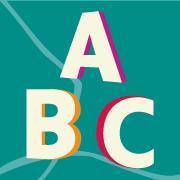 The ABC of It is an examination of why children’s books are important: what and how do they teach children, and what do they reveal about the societies that produced them? Through a dynamic array of objects and activities, the exhibition celebrates the extraordinary richness, artistry, and diversity of children’s literature across cultures and time.
The ABC of It is an examination of why children’s books are important: what and how do they teach children, and what do they reveal about the societies that produced them? Through a dynamic array of objects and activities, the exhibition celebrates the extraordinary richness, artistry, and diversity of children’s literature across cultures and time.
Our first books stir and shape us as few books ever again can. Goodnight Moon! Alice in Wonderland! A Wrinkle in Time! For three centuries and more, books made especially with the young in mind have served as indispensible gateways to literature, art, and knowledge of the world. Viewed historically and across cultures, the sheer number and variety of such volumes is apt to amaze. If, however, as adults we find that our own childhood favorites remain as thrilling or funny or heart-stoppingly beautiful as ever we should not be surprised. As W. H. Auden wisely observed: “There are no good books which are only for children.”
Today’s brightly packaged, increasingly globalized books for young people have complex roots in world folklore, Enlightenment philosophy, nationalist fervor, and the pictorial narrative traditions of Asian and Western art, among other sources. Collectively, they form a vivid record of literate society’s changing hopes and dreams, and of the never-ending challenge of communicating with young readers in the most compelling possible way.
The ABC of It draws on collections across the Library to present the literature for children and teens against a sweeping backdrop of history, the arts, popular culture, and technological change. The books and related objects on view reveal hidden historical contexts and connections and invite second looks and fresh discoveries. They suggest that books for young people have stories to tell us about ourselves, and are rarely as simple as they seem.
Support for The New York Public Library’s Exhibitions Program has been provided by Celeste Bartos, Sue and Edgar Wachenheim III, Mahnaz Ispahani Bartos and Adam Bartos Exhibitions Fund, and Jonathan Altman. Additional support for this exhibition has been provided by the Bertha and Isaac Liberman Foundation, Inc., in memory of Ruth and Seymour Klein.
About the curator: Leonard S. Marcus has curated exhibitions on children’s books and their illustration at the Eric Carle Museum of Picture Book Art, where he is also a founding trustee; New School for Social Research; Vassar College Library; the Boston Athenaeum; Enoch Pratt Free Library; Joslyn Art Museum (Omaha); Katonah Museum of Art; and the Meridian International Center (Washington, DC). His books about children’s literature and the authors and artists who create them include: Show Me a Story!; The Annotated Phantom Tollbooth; Funny Business; Golden Legacy: How Golden Books Won Children’s Hearts, Changed Publishing Forever, and Became an American Icon Along the Way; Minders of Make-Believe; Margaret Wise Brown: Awakened by the Moon; Dear Genius: The Letters of Ursula Nordstrom; A Caldecott Celebration; Side by Side; Pass It Down; Storied City; and The Wand in the Word. His incisive book reviews appeared in every issue of Parenting magazine for 21 years.




